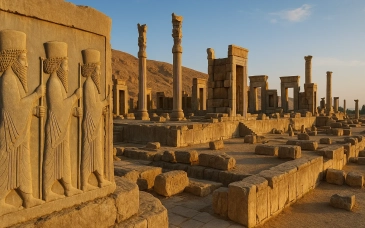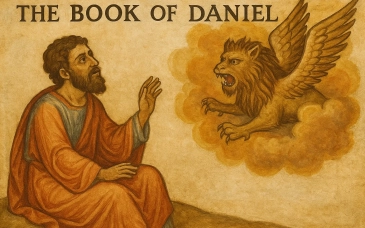"I say (these) words to you, marrying brides and bridegrooms! Impress then upon your mind: May you two enjoy the life of good mind by following the laws of religion. Let each one of you clothe the other with righteousness. Then assuredly there will be a happy life for you" - Yasna 53.5, ancient Zoroastrian textbook.
The Iranian wedding ceremony despite its local and regional variations, like many other rituals in the country goes back to the ancient Zoroastrian tradition. This was the religion of Iran before the advent of Islam 1400 years ago. Though the concepts and theory of the marriage have changed drastically by Quran and Islamic traditions, the actual ceremonies have remained more or less the same.
For Iranians marriage is considered to bean event, which must be celebrated not quietly but with glory and distinction. It is the most conspicuous of all the rituals and must be celebrated in the presence of an assembly, which can bear witness to the event.
In the ancient times, the musicians playing at marriage gatherings used drums to announce the marriage to the people of the town or village. The group that gathered for the marriage was called the assembly for the queenly bride. Traditionally, both the bride and the bridegroom would dress in white with garlands of flower on their necks. The color white is a symbol of purity, innocence and faithfulness. Today most modern Iranians follow the European dress code and style.
There are two stages to a marriage. Most often both take place on the same day, but occasionally there could become time between the two. The first is called ‘Aghed’.
This is when the legal process takes place, both the parties and their guardian’s sign a marriage contract and a bride price or ‘mahr’ is set to guarantee the financial well being of the bride. The second stage is the actual feasts and the celebrations, which traditionally lasts from 3 to 7 days.
The ceremony takes place in a specially decorated room with flowers and a beautiful and elaborately decorated spread on the floor i.e. ‘Sofreh Aghed’. By custom the Aghed would normally take place at the bride’s home or her close relatives. The bridegroom is the first to take his seat in the room and the bride comes afterwards. The bridegroom always sits on the right hand side of the bride. With Zoroastrians, the right side designates a place of respect.
The bride and the bridegroom have each marriage witness. Usually older and married males are chosen amongst close relations to stand as witnesses. The priest (Mula) or other males with recognized authority i.e. a notary public perform the legal part of the ceremony. This consists of preliminary blessings, questions to the witnesses, guardians, the marrying couple and finally the ceremony is solemnized by reciting verses from Quran, the Muslims’ holy book and signing of a legal marriage contract.
After the preliminary blessings and a few words about the importance of the institution of marriage the priest confirms with both the parents or guardians that they indeed wish to proceed with the ceremony and there are no objections. Then the priest asks the mutual consent of the couple. First the bridegroom is asked if he wishes to enter into the marriage contract then the bride is asked the same question. Once the bride is asked if she agrees to the marriage, she pauses. The questions repeated three times and it is only at the last time that she will say yes. To make the bridegroom wait for the bride’s answer is to signify that it is the husband who seeks the wife and is anxious to have her and not the other way around.
During the service female relatives of the couple (mainly the bride) hold over the couple’s head a fine scarf or other delicate fabrics like silk. Two different actions take place at the sometime. Two pieces of crystallized sugar shaped like cones are rubbed together, a symbolic act to sweeten the couple’s life together. In the second act two parts of the same fabric are sewn together with needle and thread. The ceremony is reminiscent of the ancient traditions. Zoroastrians today hold over the grooms head a small tray on which two pieces of cloth (Kosti) are united together, with needle, thread, scissors, a raw egg, a pomegranate or apple, dried marjoram, and white sweetmeats, all covered by a green kerchief. The symbolic act of sewing two parts together is uniting the couple for the rest of their lives, a knot is tied that should not be broke nor separated.
Once the bride has said yes to the proposal, verses from Quran are read. Documents are signed, the amount of mahr is entered in the written document and the two are announced man and wife. The practice of setting up a bride price or mahr is becoming a ceremonial one for most modern couples. Etymologically meaning “price” or “ransom”, mahr is the money or other valuables, paid or promised to be paid to the bride by the groom or his family for the financial protection of the bride in case of a divorce. Once this is over, the couple will held their right hands together, will drink a sweet liquid or will taste some honey for a better and sweeter life.
At this time the bride is showered by gifts, usually expensive jewelry and all she receives is hers and the husband has no right over the presents. Songs, jokes and merry-making gestures and clapping of the hands, accompany the whole ceremony. The elaborately decorated spread in front of the bride and groom contains several items each symbolizing a different aspect of the ancient religion.
Mirror and candles represent light and fire, two very important elements in the Zoroastrian religion. A specially baked and decorated flatbread is to bring prosperous feasts. Gold represents prosperity. Honey and crystallized sugar to sweeten life. Esphand a popular incense is burnt. This item is used in many Zoroastrian religious ceremonies, rituals and purification rites. It is believed to keep the evil eye away. After the ceremony, there are lavish feasts, dancing, music and entertainers. There will be more parties given by close relatives and friends for the next few weeks. The marriage ceremony marks the most significant ritual for all Iranians specially the women.

